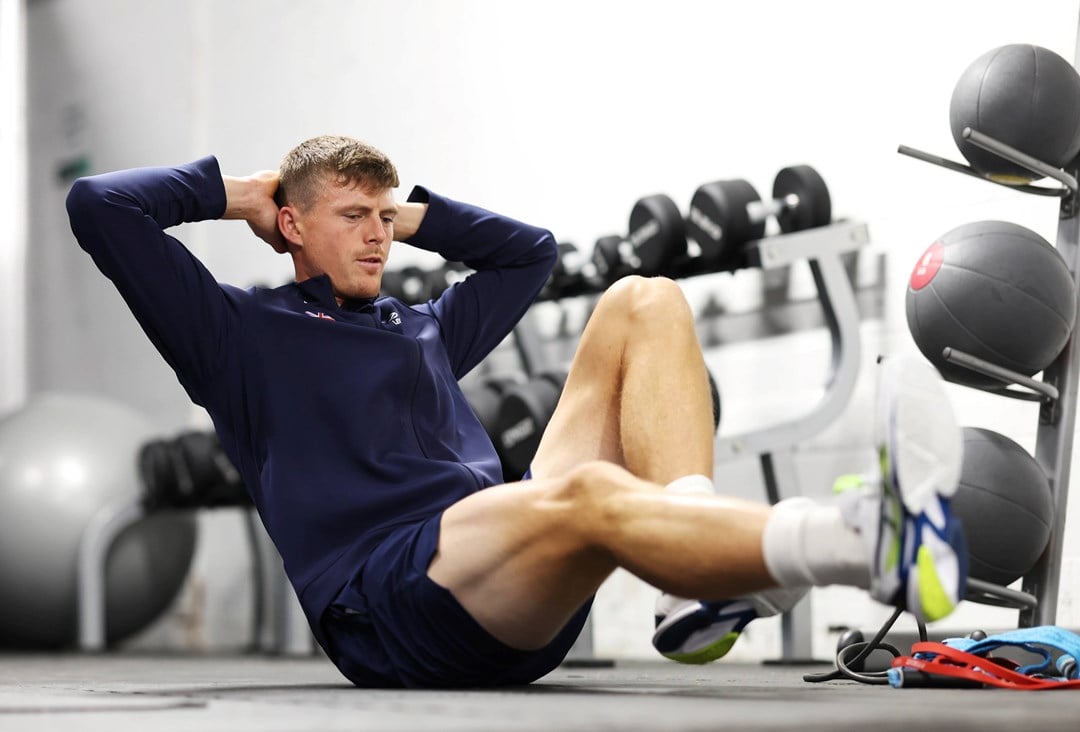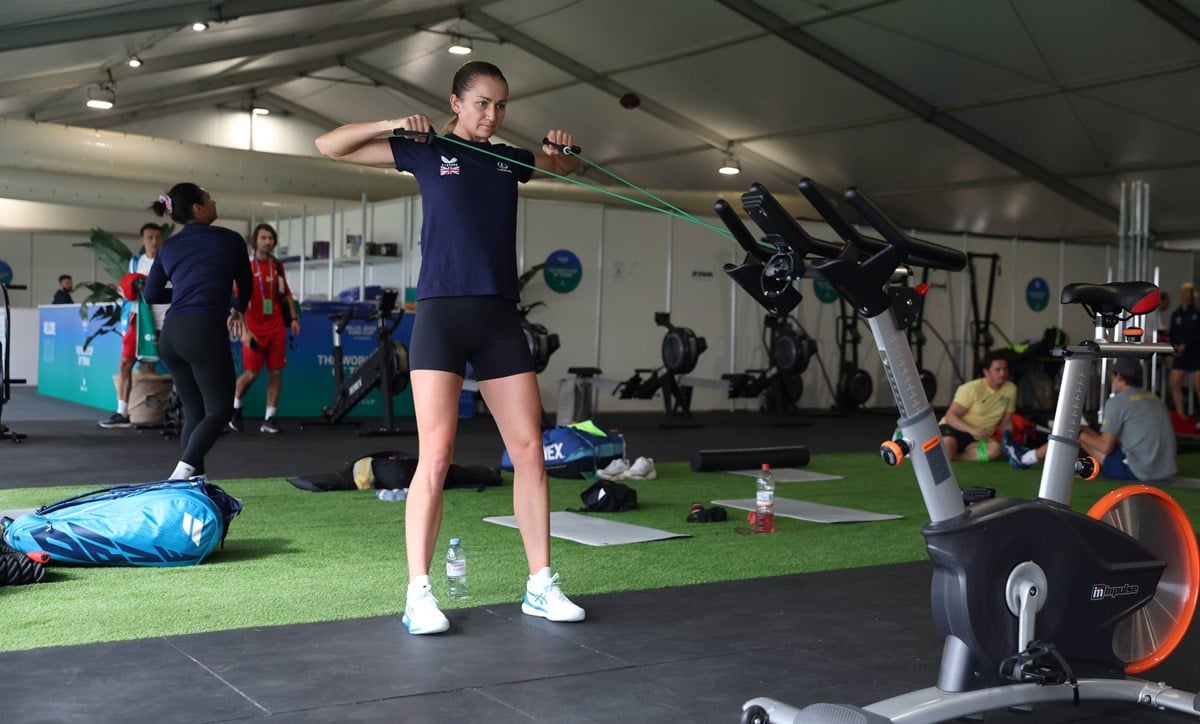
Preparing British tennis players for the physical demands of the professional game
• 3 MINUTE READ
Tennis is an intense, physical sport – explosive movements, quick changes in direction and immense full body strength.
Ensuring that players get the right preparation in training and in the gym before competition can be the difference between wins and losses in a sport where matches can last over five hours in some cases.
LTA Physical Preparation Coach Ollie Fawls discusses how he and the LTA Performance team support player’s physical development and conditioning so they can reach their potential on the match court.
Describe what you do, who you are currently working with and how regularly you work with the players?
As physical preparation coaches, we prepare professional tennis players for the physical demands of the sport. This is achieved by applying sport sciences principles such as strength and conditioning, load monitoring, athletic profiling and data analysis.
Currently we support many British singles and doubles players who are either on delivered or supported programmes ranging in ranking from 500 to top 100. Most players train at the National Tennis Centre in Roehampton, where we deliver training services for many weeks in the year. In addition, we also provide on the road support to all major tournaments and other events across the year.
What kind of training and physical prep do the British players undergo to get them fit – especially for Wimbledon?
Zooming out, a ‘fit’ British tennis player is a player who is available for 26-29 tournaments per year and can compete week in week out playing up to 60 and 80 matches per year (women’s and men’s respectively).
Zooming in day to day, to achieve the above British players training is tailored to their own areas of development but typically covers three main themes: Robustness, Powerful, Great Agile Mover.
To simplify, training robustness means a player is strong in all relevant muscle groups for tennis and trains regularly at or above match demands. Being powerful means players are fast and can repeat the high intensity efforts you see in the modern game. Being a great agile mover means players can repeatedly change direction, cover the whole court and execute all ground strokes with good efficiency.
Around Wimbledon player’s programme may change a little to accommodate changes in surface; the ball speeds up off the ground and stays lower compared to other surfaces.
This means players must stay lower placing additional stress on the lower back and knees compared to other surfaces. In addition, the greater ball speed means players are hitting more shots on the run increasing their change of direction load on the lower body.
With more support being provided over the grass, our primary focus though is to ensure players are doing the daily basics to a high level to maximise their chance of bringing their best onto the match court. This would include; are players well hydrated and fuelled each day, physical warm ups are intense and relevant against match demands, all recovery resources available are utilised and communication within players teams is professional, clear and consistent.

How crucial is your work to the modern game and getting a British player to number one?
Our role is crucial; the modern game is faster and more intense. Particularly for the men’s game you see more all court game styles at the highest level; meaning players are repeatedly exposed to more high intensity movements and change of directions. The recent men’s final at Roland Garros between Jannik Sinner and Carlos Alcaraz was an advert for this for five and half hours. As a result, you can’t be a top professional player in the modern game without being a top athlete as well.
What are the challenges you face in the role?
One key challenge is that we can’t be with the players week in week out. At times we may need to prioritize who we support and ensure our remote programming and communication is consistent to those we cannot support in person.
How have expectations of fitness changed over the years? Are tennis players expected to be fitter than ever? What’s your number one tip?
Theres no hiding in the modern game; the physical standards are there for all to see at the top level. So, for any aspiring top player they know they need to engage with athletic development to give themselves the best chance to compete at the highest level.
For us as physical preparation coaches we have seen a shift in the way players are trained. Outdated methods where low intensity activity like long distance running or low speed shadowing drills were most prevalent are now trumped by high force and high-speed tasks to meet the modern games demands.
A general top tip for any aspiring top player or junior is to never waste a warm up. 15-30 minutes each day of targeted exercises and drills to develop yourself as a tennis athlete goes a long way.





